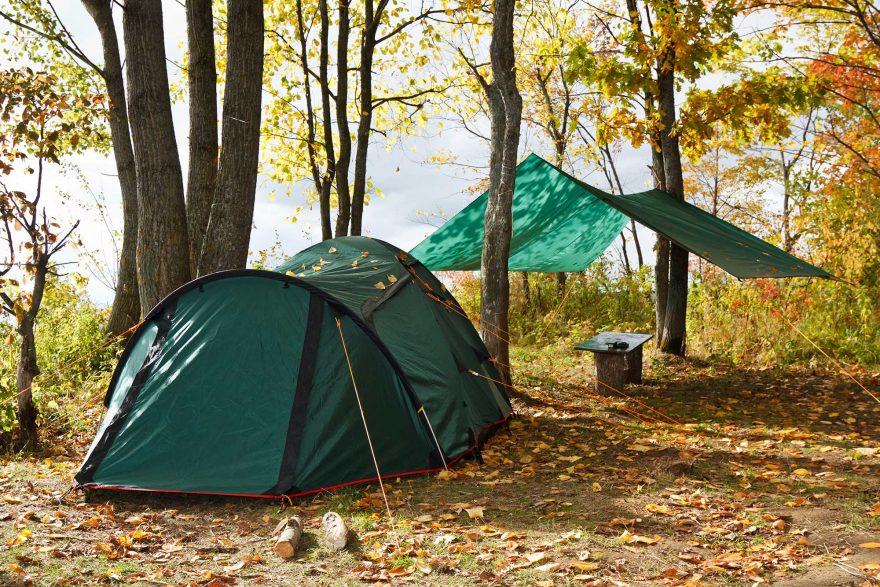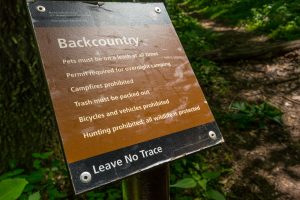
Image by Dmitry Kuksin, Shutterstock
You’ve probably heard the phrase “Leave No Trace” or you’ve seen the phrase at a trailhead or on a wilderness brochure. But what does “Leave No Trace” actually mean?
Here’s some basic background on the subject and some practical ways to minimize your impact on nature.
History of Leave No Trace
The popularity of backcountry recreation boomed in the 1960s and ’70s. Hikers, climbers and campers flooded wilderness areas to explore and enjoy uncharted territory. But forest managers soon found that these explorers were actually “loving the wilderness to death.” Overcrowding and littering caused ecological damage like erosion and vegetation damage. Pollutants were running off into creeks, lakes and rivers and affecting fish reproduction. Negative impacts on wilderness like these had created the need for wilderness management.
Although the exact origin of Leave No Trace is unknown, U.S. Forest Service managers officially formed a “no trace” program in 1987. Groups such as the Boy Scouts of America put a strong emphasis on these principles.
Simply put, Leave No Trace is a compilation of the best practices to follow to protect natural spaces while you’re enjoying them.

7 Principles of Leave No Trace
Plan ahead and prepare
Trip planning and preparation will help keep your backcountry trip safe and enjoyable while also minimizing damage to the land. Gain knowledge of the area you’re planning to visit. Talk to land managers, look at maps and read about the area online.
Travel and camp on durable surfaces
While hiking, your goal should be to move through natural areas while avoiding damage to the land and waterways. “Travel damage” happens when tiny organisms get trampled beyond recovery. It’s best to stay on designated trails when possible to avoid damage.
When selecting your campsite, use your best judgement. Avoid camping close to water and trails, and many parks have specific rules around where to set up your shelter. Camping 200 feet (70 adult steps) away from the water’s edge allows wildlife to pass undisturbed.
Dispose of waste properly
Besides the obvious, “don’t litter,” you’ll want to properly dispose of your human waste by burying it correctly or packing it out (like when you’re in narrow river canyons). Proper disposal of human waste is important to avoid water pollution, minimize the spread of disease and maximize the rate of decomposition.
Leave what you find
You should try to leave an area as you found it. Avoid digging trenches. If you make a shelter, dismantle it and avoid hammering into live trees to hang items. Leave artifacts. Leave wildflowers. Although picking wildflowers seems trivial, imagine if every visitor picked a few. The impact on the ecosystem would be major. Instead, consider simply taking a photo.
Minimize campfire impacts
You should first know whether it’s safe to have a campfire. What is the fire danger? Are there fire restrictions? If it’s safe to build a fire, try to camp in areas where wood is abundant. You could also consider using a lightweight camp stove for cooking. Stoves are fast, flexible and operate in almost any weather condition while leaving no trace. Remember, a true Leave No Trace fire shows no evidence of having been constructed.
Respect wildlife
Quick movements and loud noises are stressful to wildlife. Avoid pursuing, feeding or forcing animals to flee. (One exception is in bear country where it is good to make a little noise so as not to startle the bears.) In hot or cold weather, even a small disturbance can affect an animal’s ability to withstand the rigorous environment. Don’t touch, get close to, feed or pick up wild animals. It’s stressful to the animal, and that animal may have rabies or harbor other diseases.
Be considerate of other visitors
You should always be courteous toward other visitors. Keep your noise level down. If you pack something in, pack it out. Most people go into the wilderness to get away from noise and pollution. By leaving no trace, you’re also helping others enjoy their outdoor experience.
Suzanne Downing is an outdoor writer and photographer in Montana with an environmental science journalism background. Her work can be found in Outdoors Unlimited, Bugle Magazine, Missoulian, Byline Magazine, Communique, MTPR online, UM Native News, National Wildlife Federation campaigns and more.
 Your Privacy Choices
Your Privacy Choices
 The
The